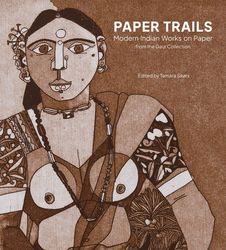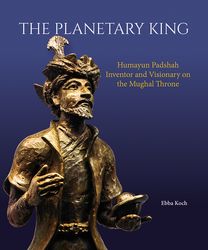Arpita Singh’s ‘This Could Be Us, You, Or Anybody Else’ (Multiple-plate etching, 2007) is a poignant reflection on the impact of globalisation on a modern Indian. It prominently features an aging couple against a backdrop of modern life. Many more such masterpieces by renowned Indian artists embellish the pages of Paper Trails: Modern Indian Works on Paper from the Gaur Collection.
Ranging from M.F. Husain’s ‘Yatra’ (lithograph,1950) to Jyoti Bhatt’s ‘Images of Saurashtra Embroidery’ (etching,1994), India’s eventful and sometimes violent modern history is captured on paper by these masters of art.
The book features over 100 pictures in the form of watercolours, drawings, etchings, sketches and lithographs, taken from the collection of Sunanda and Umesh Gaur, the US-based art collectors. Paper, which has played an essential role in both Indian modernism and artistic production, is largely the medium of art. The pictures are a testament to the artists’ intimate relationship with paper as a means to express their creative thought.
The artists’ personal histories and the message they want to convey are categorised into six themes, including ‘topographic engagements’, ‘myth and religion’ and ‘abstractions’. The book powerfully depicts the complexities of Indian modernity and the way they play out in rural and urban realities. Whether it is spiritual conflicts or communal riots, the viewer is privy to the novel perspective of some of the country’s finest artists.
PAPER TRAILS: MODERN INDIAN WORKS ON PAPER FROM THE GAUR COLLECTION
Edited by Tamara Sears
Published by Grinnell College Museum of Art in association with Mapin Publishing
Price Rs2,500; pages 232
Unlike those of his illustrious father Babur―the founder of the Mughal Empire in India―Humayun’s numerous achievements have not been recorded in detail. Describing his eventful reign from Agra (1530 to 1540) and Delhi (1555 to 1556), The Planetary King is a commendable effort by Austrian art and architectural historian Ebba Koch to chronicle the emperor’s intellectual and social life.
The book follows Humayun’s travels and campaigns during the political and social disturbances of the early 16th century, and expounds on his lasting passion for the arts and sciences. Compiled upon the completion of two decades of conservation work at the Humayun’s tomb and the construction of a new museum by the Aga Khan Trust for Culture, the book beautifully reproduces hundreds of illustrations and photographs recounting Humayun’s life.
His love for architecture, astrology and astronomy, which gave him the titles ‘planetary king’ and ‘sun king’, is skilfully brought out. He set up a planetary court centred around him as the glorious ‘sun king’. Architectural marvels such as the mystic palace and the floating gardens constructed during Humayun’s reign are all examples of his scientific temperament and patronage of the arts―central themes in the book. It is an engaging coffee-table book, combining visual appeal with engrossing text to provide a wholesome reading experience.
THE PLANETARY KING(HUMAYUN PADSHAH:INVENTOR AND VISIONARYON THE MUGHAL THRONE)
By Ebba Koch
Published by Aga Khan Trust for Culture and Mapin Publishing
Price Rs3,950; pages 384



